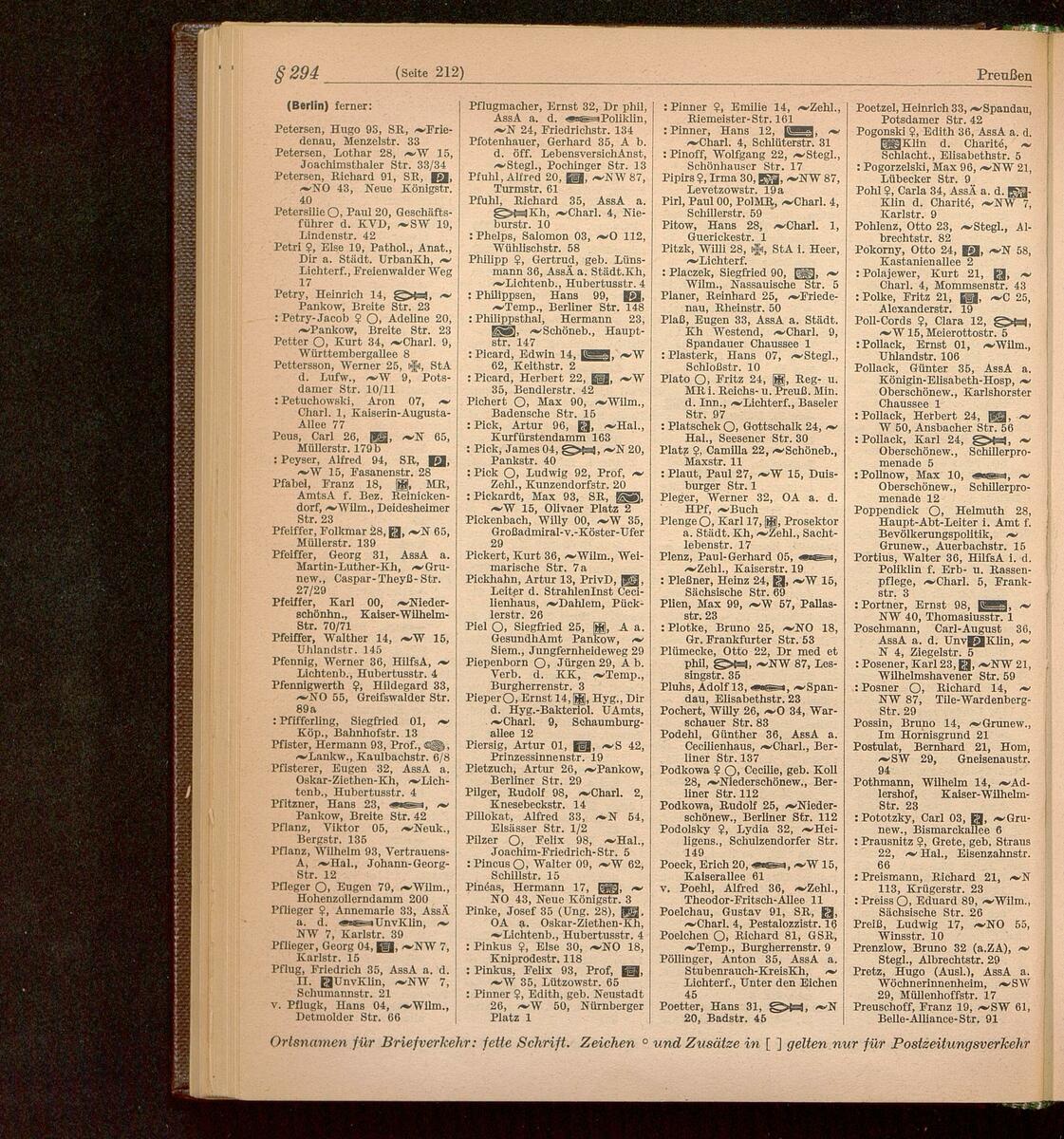Abstract
As the regime’s public persecution of Jews and other so-called
undesirables increased in intensity and brazenness in the late 1930s,
its economic persecution of these groups progressed as well, albeit
through subtler means. As historians have noted, Jews suffered “social
death” long before they faced physical deportation and murder.
Understanding this social death means examining the ways in which
Germans encountered—and adopted—less overt forms of antisemitism in
their everyday lives. This culture of antisemitism led to many small
changes that, by themselves, would hardly have seemed surprising within
the greater context of National Socialist Germany. Nonetheless, these
small changes show how Jews were increasingly isolated from the rest of
German society.
Below is a page from a German commercial
address book (the equivalent of North America’s “yellow pages”), in this
case listing physicians in Prussia. Several of the doctors (at least
half) have been singled out with a colon in front of their names, which
indicated that they were Jewish. Over course of the 1930s, Jews had
already been slowly expelled from the professions through more direct
measures, from prohibitions against employment in the civil service to
restrictions on medical school admissions, among other regulations. This
list of doctors from 1937 conveyed a quiet, yet strong message: that
Germans had a choice when it came to physicians, and that in choosing,
they ought to support the values and ideals of the Nazi movement. Thus,
the list attests not only to the insidious nature of National Socialist
ideology, but also to the less easily definable cultural racism in which
Germans engaged on a daily basis.
